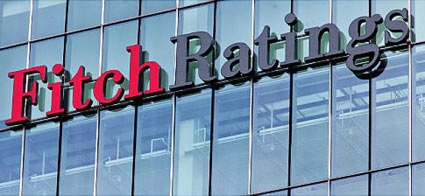Top Stories
FITCH: SOUTH AFRICA SETS PRECEDENT FOR SENIOR BANK BAIL-IN

The resolution of African Bank Limited (unrated) sets a precedent for senior bail-ins, Fitch Ratings says. We believe that the authorities may take confidence from their ability to impose losses on senior creditors of a small bank in an orderly fashion should a larger institution get into trouble in the future.

South Africa has bailed-in senior creditors using existing powers to place the bank in curatorship in the absence of formal resolution legislation, which is still being finalised. This is striking because a 2013 Financial Stability Board (FSB) peer report identified several gaps in South Africa’s resolution framework, including a lack of bail-in powers. The SARB appears to have been guided by the internationally agreed FSB Key Attributes and the principle that no creditor should be worse off than in liquidation.
South Africa’s approach with both bail-out and bail-in elements and a split between a good and bad book is in line with our rating support path classification of 2 for South African banks, for which we believe sovereign support is still possible, although it is weakening.
South Africa’s banking system is unlikely to be materially affected by African Bank’s problems as the SARB took swift action. The five largest banks we rate (Barclays Africa, FirstRand, Investec, Nedbank and Standard Bank) have small exposures to the lender. The five are also part of the consortium underwriting new capital in the good bank. But the underwriting exposure is not significant relative to each participant bank’s capital or balance sheet.
Retail depositors, representing less than 1% of African Bank’s creditors, are protected, reducing systemic risks in a country without deposit insurance. Losses imposed on senior creditors are unlikely to materially disrupt wholesale funding markets because of the size of the bank and strong rand liquidity in the system, but it could have some implications for funding costs.
The problems at African Bank highlight the risks in unsecured personal lending, if not appropriately managed. In South Africa, this market grew rapidly in 2011 and 2012, but slowed significantly in 2013 and in 2014 as banks pulled back from the segment. Unsecured personal loan exposures (including credit cards) are limited in the four major banks, forming 10% or less of gross loans (Investec’s high net worth focus means it is not exposed to this type of lending). We expect the major banks non-performing unsecured personal loans to increase gradually over the next 12-18 months in light of South Africa’s weakening operating and economic environment, rising interest rates and the high level of household debt, even though it is clear the major banks were not necessarily targeting low income groups and did not have a high risk appetite, like African Bank and other niche lenders in this space,

-
Banking3 days ago
Open Banking and Cross-Border Payments: Advancements and Challenges
-
Finance3 days ago
Cross-border payments: The key to global business success
-
Interviews4 days ago
Navigating the Transformative Banking Landscape
-
Finance3 days ago
An Overview of Exchange-Traded Funds (ETFs) and Their Benefits







